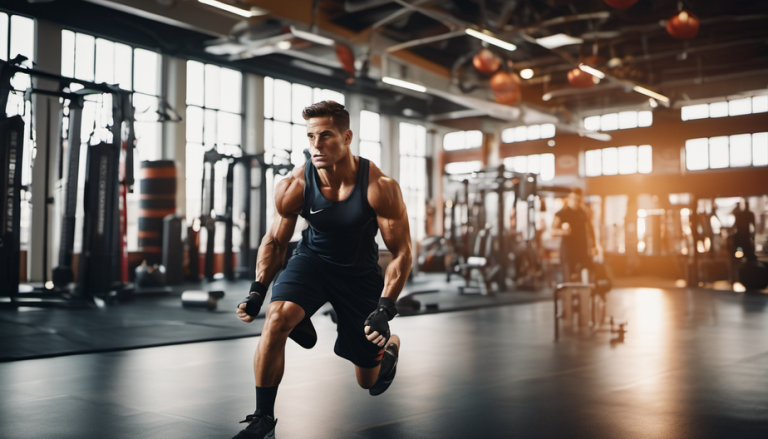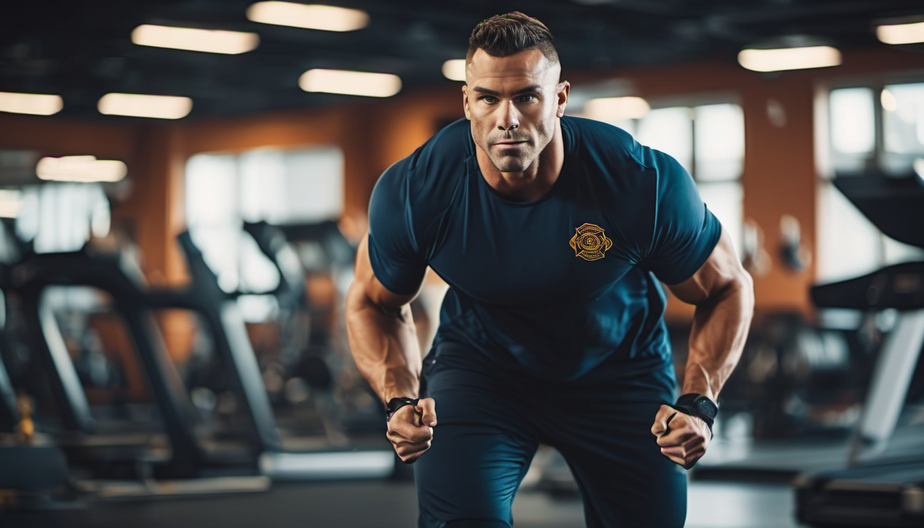Firefighter Fitness Program: Staying in Shape for the Job
Excerpt: A practical firefighter fitness program for Australian volunteers and career crews—covering prevention, preparedness, response and recovery. Build strength, mobility, heat tolerance and resilience with science‑backed drills, quick wins, and crew‑leader tips.
On this page
Prevention: Reduce injury risk before it starts
Prevention in a firefighter fitness program means building capacity for hot, heavy and awkward work well before the pager goes off. We target the big three risks: musculoskeletal injury, heat illness and cardiovascular events.
Controls
- 2–3 strength sessions/week (hinge, squat, push, pull, carry).
- Cardio intervals + steady base (VO₂ & recovery).
- Mobility for hips, thoracic spine, ankles, shoulders.
- Sleep & shift strategy; caffeine timing.
Standards & duties
- Fit‑for‑duty policies; annual medical & VO₂ submax tests.
- Manual handling: team lifts & mechanical aids first.
- Hydration & rehab SOPs at incidents and training.
Signals to act early
- Persistent niggles > 7 days—book physio.
- Unusual breathlessness, chest pain, dizziness—call 000.
- Repeat poor sleep on shifts—review roster & naps.
Preparedness: Your 12‑week firefighter fitness program
This template suits most adults with medical clearance. Adjust load to ability. Use a Rate of Perceived Exertion (RPE) scale 1–10. Warm up 5–7 minutes; finish with mobility and a short walk.
Weeks 1–4 (Base)
- Strength 2×: goblet squat, hip hinge, push‑up, row, suitcase carry (3×8–10).
- Cardio 3×: 25–35 min brisk walk/jog/row (RPE 5–6).
- Mobility: hips, T‑spine, ankles (10–12 mins/day).
Weeks 5–8 (Build)
- Strength 3×: barbell or sandbag squat/hinge; overhead press; chin‑assist (4×5–8).
- Intervals 1×: 6×2‑min hard/2‑min easy (RPE 7–8).
- Steady 1–2×: 30–40 min (RPE 6).
Weeks 9–12 (Job‑ready)
- Strength 3×: deadlift or trap‑bar; front squat; bench; carries (farmer + sandbag bear hug).
- Intervals 1×: hills or sled 8×60s on/90s off (RPE 8).
- Steady 1×: 40–50 min (RPE 6–7).
How it works: The operational science
Fireground tasks blend strength (lifting, dragging), power (hose handling), aerobic capacity (long shifts) and heat tolerance. Training targets: VO₂ max, lactate threshold, maximal strength, local muscular endurance, and thermoregulation via hydration and pacing.
- Strength: heavy compounds improve safe lifting and stability.
- Cardio: intervals raise ceiling; steady work builds staying power.
- Mobility: better range reduces awkward‑load injury.
- Rehab: structured cool‑downs and nutrition speed recovery.

Roles & coordination (ICS basics)
Equipment & tools
Station/training
- Sandbags (10–30 kg), sled, battle ropes, cones, step box.
- Trap‑bar, kettlebells, resistance bands.
- Stairwell or tower access; hydration & shade.
Personal kit
- Supportive footwear, socks to prevent blisters.
- Cooling towel, sunscreen, electrolyte sachets.
- Notebook/app for logging; heart‑rate strap optional.
Maintenance & safety
- Monthly gear checks; clean grips & replace worn bands.
- Tag‑out damaged kit; clear walkways and rack storage.
Response: First actions & safety
LACES for fitness
- Lookouts: buddy monitors heat & fatigue.
- Awareness: know limits, escalate early.
- Comms: rehab requests stated clearly.
- Escape: shaded rehab area known.
- Safety zones: water, ice, chair, med kit.
Triaging fatigue
- RPE > 8, confusion, dizziness, chills → rehab now.
- Cool, hydrate, loosen PPE, reassess in 10 minutes.
- Chest pain or collapse → call 000 immediately.
Handover
- SITREP includes welfare status, hydration, rotations due.
- Replace fatigued crew before critical tasks.
Recovery: Reset to stay job‑ready
Cool‑down & nutrition
- 5–10 min easy walk; breathing drills (4‑6 breaths/min).
- Carbs + protein within 60 mins; electrolytes if hot.
Sleep & mental health
- Dark, cool room; short nap before driving home if fatigued.
- Peer support; check‑ins after challenging incidents.
Admin & insurance
- Report injuries early; lodge claims with documentation.
- Debrief: what worked, what to improve in training.
Field scenarios: Train like you deploy
Checklists
Household
- Daily walk 30 mins; weekend hills or stairs.
- Protein with every meal; water bottle visible.
- Medication plan for shifts; GP review annually.
Business/brigade
- Roster training nights; record attendance.
- Shade, chairs and water at training sites.
- Incident rehab SOP posted on appliance.
Responders
- Warm up before BA; buddy checks; RPE logs.
- Rotate every 20–30 mins in heat; hydrate early.
- Cool‑down; report niggles; update logbook.
Accessibility & inclusion
- Older adults: reduce jump/impact; favour carries, step‑ups, cycling.
- Disability: adapt with seated presses, sled pulls, band rows; partner support.
- Kids & family: weekend walks and light circuits; model hydration and sun safety.
- Language: visual posters and colour cards; plain English cues.
- PPE fit: ensure correct sizing to avoid overexertion and chafing.
Emergency contacts — quick list
- Emergency (Police/Fire/Ambulance): Call 000 (or 106 TTY).
- Poison Information: 13 11 26
- Health advice: Healthdirect
- VicEmergency: Warnings & incidents
- NSW RFS: Fire information
- QLD QFES: Preparedness
- Lifeline (24/7): 13 11 14
Preparedness in 5 minutes
- Fill a 750 mL bottle and put it by your keys.
- Do 2×30‑second suitcase carries with anything heavy.
- Book two training nights in your calendar.
- Stretch calves, hips and T‑spine for 3 minutes.
- Text your buddy your goal for this week.
For crew leaders
- Post clear rehab and rotation timings on a whiteboard.
- Track RPE and session attendance; praise consistency.
- Demonstrate technique every drill; correct gently, early.
FAQs
How often should I train?
Aim for 3–4 sessions/week: 2–3 strength, 1–2 cardio, daily short mobility.
Do I need a gym?
No—sandbags, stairs, packs and carries cover most needs. A trap‑bar helps.
Is cardio or strength more important?
Both. Use intervals for VO₂ and heavy lifts for safe handling. Balance is key.
What about heat?
Hydrate before you feel thirsty; pace work; rotate in shade; use cooling towels.
How do I avoid injury?
Warm up, progress load slowly, log soreness, and see a physio for persistent pain.
Can older members follow this?
Yes—scale impact, emphasise carries, cycling and mobility; prioritise recovery.
How soon will I notice changes?
Within 2–4 weeks you’ll feel better endurance; 6–12 weeks for strength gains.
Where does firefighter fitness fit into BA training?
Use it to build the base, then layer BA sets as a specific interval session.
Links & hotlines (Australia)
Credits & review notes
Prepared by Australian emergency operations writers with input from firefighters, medics and exercise professionals. Reviewed for plain‑English clarity and inclusion. Feedback welcome for future updates.
Not emergency advice: This guide supports education only. Follow your agency’s SOPs and local warnings.
Training helps — join your local brigade/unit and keep skills current.



